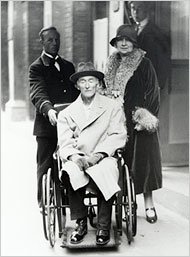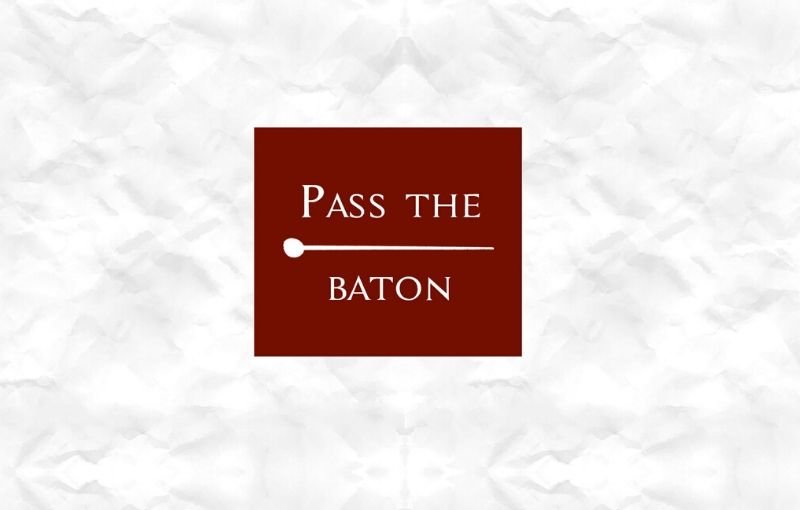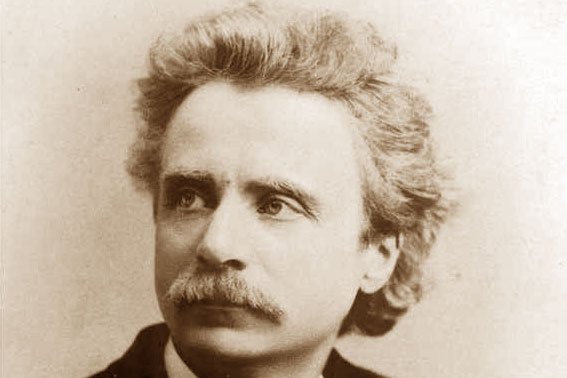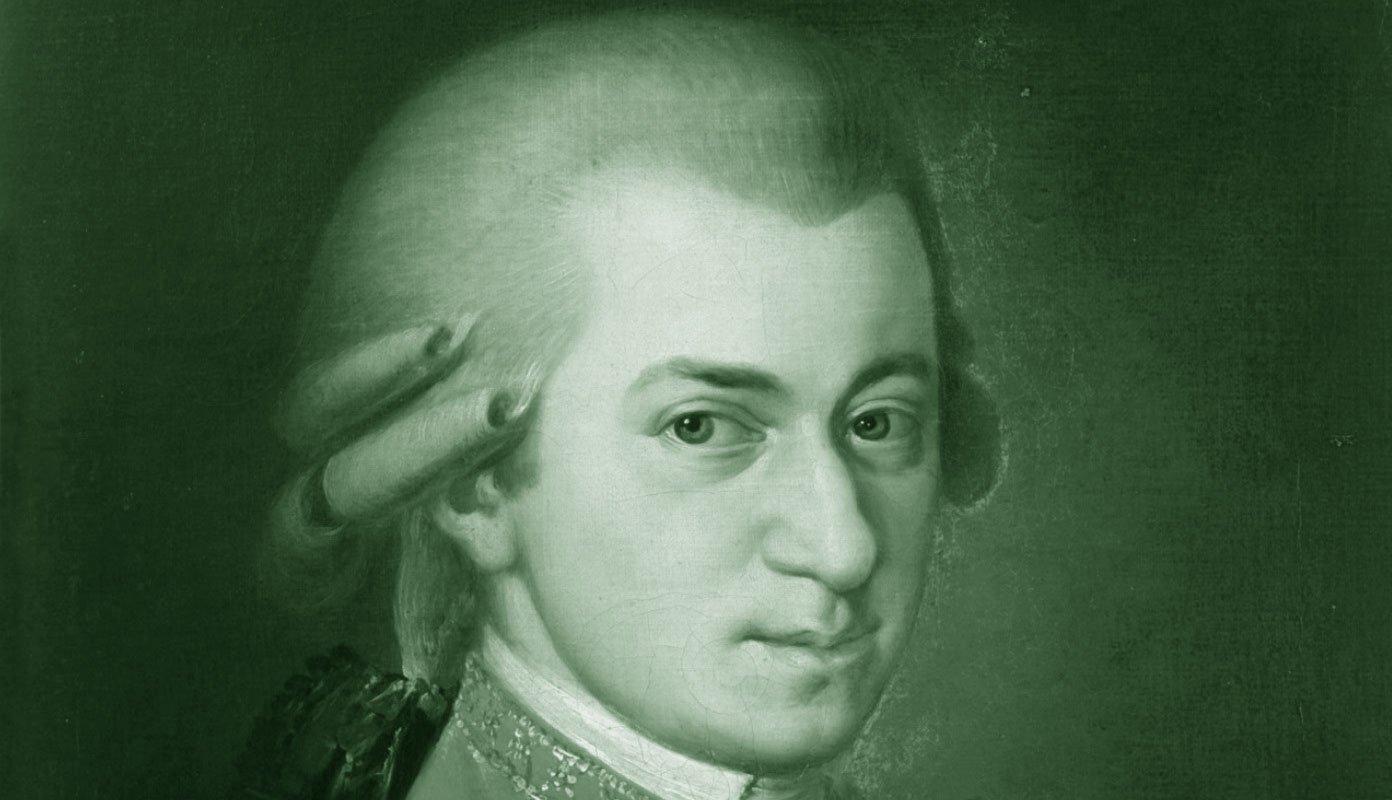A mass of life – Delius meets Nietzsche
Frederick Delius composed A Mass of Life in 1904-05, the same period in which he saw the birth of splendid works like Appalachia or his Piano Concerto. A mass of life is based upon the writings and poetry of his namesake Friedrich Nietzsche, the father of 20th Century philosophy, in which he extols human willpower and wisdom above all things. The texts come from Also sprach Zarathustra, discovered by Delius on a trip to Norway, and for such reason A Mass of Life is a purely humanistic liturgy; one in which mankind’s joyful thoughts and actions have replaced a heavenly Paradise.
It would even be possible to consider all ‘Zarathustra’ as a musical composition
wrote Friedrich Nietzsche himself. No composer was more receptive to Nietzsche’s analogies than Frederick Delius.
The suggestive force of the first reaction to some gorgeous parts of Zarathustra – The Midnight-Song given at the Delius concert in London in 1899 and later to become the pivot of A Mass of Life – is compelling to the point that the shaping of the work in its present dimensions can now be seen to have been unavoidable. As mentioned, Zarathustra was discovered by Delius in Norway. In the words of Eric Fenby, a close friend of Delius:
“When, one wet day . . . he was looking for something to read in the library of a Norwegian friend with whom he was staying during a walking tour, and had taken down a book, Thus Spake Zarathustra . . . he was ripe for it. It was the very book he had been seeking all along.”
Embracing Zarathustra
Nietzsche’s most famous book made quite an impression when it first appeared in 1883. Like all great personalities, Nietzsche divided (and still does) his audience: the fierce criticism of morality, or false-morality, the shifting concept of good and evil, the (bad) influence of Christianity in society, and, above all, the negation of an afterlife along with the celebrations of potential of the individuals.
A perfect picture of Delius himself: atheist and completely committed to music, a form of

A fragile health
Son of a German merchant who became British, Delius spent most of his life outside the United Kingdom,
Delius the impressionist?
Delius is commonly defined as an impressionist composer, in light of the innovations introduced by composers such as Claude Debussy after passing the romantic and late romantic model; his work, substantially meditative and introverted, melancholic and evocative, naturally inclined to a non-trivial form of musical descriptive style, is influenced by Edvard Grieg, also a friend of Delius.
I’m not quite sure it would be proper to categorize A Mass of Life as an impressionistic piece. Not in the sense of Debussy anyway. The vision and aesthetics of this giant choral work go way beyond the observation of the moment, reaching out to a dimension embracing the entire journey of life.
It’s no wonder that the discovery of the work of Delius is mainly due to another iconoclast of the time, the great conductor Sir Thomas Beecham, who
Beecham himself conducted the full premiere of A Mass of Life in London, in 1909.
T. Beecham on A mass of Life
Beecham talking about this massive Delius’ work in a radio interview.
Another great interpreter of this work was British conductor Charles Groves: incidentally, Groves was playing in the percussion section of the orchestra at the Royal College of Music when Sir Thomas was invited as a guest conductor.
Instruments and structure
Written for a massive ensemble – Soprano, Contralto, Tenor and Baritone Soloists, Double Chorus and Orchestra: 3 flutes with piccolo, 3 oboes, English horn, bass oboe; 3 clarinets, bass clarinet; 3 bassoons, double bassoon; 6 horns; 4 trumpets; 3 tenor trombones; bass tuba; 2 harps; percussion and strings – A Mass of Life is constituted by two blocks of respectively 5 and 6 sections.
Structure: A mass of life – Part 1
-
INVOCATION
A passionate choral address to the Will, Zarathustra’s ruling compulsion in life, opens the work. He pleads that he may transcend in his soul all the pettiness of life, so that in his prime he may face whatever his inmost Will may demand. The music is driven by tremendous purposefulness: a gathering and holding of massive strength and determination – with brief relaxing moments – hints, at times, to Wagner’s heritage, both in rhythm and weight
-
THE SONG OF LAUGHTER
Zarathustra encourages, with a short baritone recitative, all higher men to honor and venerate laughter and dance. The orchestra
take on an almost grotesque color as Zarathustra’s sacred laughter is depicted by triple brass coupled with woodwinds -
THE SONG OF LIFE
Man is
lover , Lifehis loved one. It’s tough to get more humanistic than this. Tenor, soprano and contralto soloists comment on Man and Life while Life dances enticingly before Zarathustra. An almost ethereal descant of women voices counterpoints the scene, but soon the pace is changed and the chorus joinsin in a fugue-like moment. Zarathustra is ecstatic, but the joyful mood is soon interrupted by a moving contralto solo, as Life doubts Zarathustra’s faithfulness. An old bell rings and the basses intone The Midnight-Song: “O Man, mark well, what tolls the solemn midnight bell”- Life and Zarathustra look on each other, overwhelmed by emotion: Life was never so dear to Zarathustra. The music seals the scene with a fading chord. -
THE RIDDLE
Peace does not last long in Man’s heart: Zarathustra appears to be moving to a darker place, filled with doubts. The music describes a mood on the verge of desperation, with questioning figuration, the choir reinforcing Zarathustra’s heart-searching. The anxious Man is finally calmed down with a single transition from B minor to F major.
-
THE NIGHT SONG
The point of origin and the pivotal momentum of the Mass of Life, this hymn-like piece flows
in a slow pace of wide phrases sustained by chords. The orchestration is magical and evocative of a mysterious night, holding at its core the mystery of life. Delius outperforms himself, playing with diatonic and chromatic elements, crafting carefully the disposition of the instruments and usingchoral choral interjections to heighten tension, building a magnificent arc that logically moves through peak and falls, to end where it began.
Structure: A mass of life – Part 2
-
ON THE MOUNTAINS
Zarathustra is alone with his thoughts in the stillness of high Mountains; horn calls echo over the distant valleys. The quietude is interrupted by a great surge of sound, unleashed in praise of Man’s ‘Noon-tide’. Quieter passages in which soprano, contralto and tenor soloists add a brief trio on the sorrows of their ‘Spring-tide’, now left behind, lead to a return of the ‘Noon-tide’ music, which culminates in a call to all artists: “Wax hard!”
-
THE SONG OF THE LYRE
One of the most enigmatic passages of the entire Mass of Life. The emotional involvement and the peculiar flair that pervade this song will become a dominant component of Delius’s later compositions. The feeling of the coda recurs in Brigg Fair, In a Summer Garden, An Arabesk, the violin, cello and double concertos. Zarathustra sees joyful meaning in life – for Joy longs to Recur!
-
THE DANCE SONG
It is evening. Zarathustra is wandering in the forest. The dance is represented by a joyful bunch of young girls, dancing together in a meadow, in a ring of trees and bushes. Swaying rhythms pervade the song, overlapping layers adding charming intricacies in a swirl of laughter and delightfulness. The girls at first scatter when they see Zarathustra, but then, reassured, they return dancing only to tire soon and leave Zarathustra in a dream-like state in the cool dusk. Women’s voices fade in and out from the woods, increasing the melancholic mood, while night falls and all that’s left is a memory of the dance in the muted strings.
-
AT NOON IN THE MEADOWS
Pastoral scene: Zarathustra, now come of age at the noon-tide of life, relishes solitude and is rapt in his happiness. Shepherds’ pipes – an elegant combination of oboe, English horn and bass oboe – gently lull Zarathustra, who’s dozing off under a gnarled tree. Chorus and tenor soloist quietly comment on the scene. Zarathustra stirs, and soloists, chorus and orchestra stretch their limbs joyously. Bemused, Zarathustra refuses to be roused. The myriad voices of Eternity seem to live again in the suspended pianissimo chords of the choir’s “Oh bliss! Oh bliss! Oh bliss!” Zarathustra knows complete content.
-
THE SONG OF RAPTURE
Zarathustra, now in the eventide of life, reflects on the past and the indifference of men. The mood is more reflective, almost giving in into regret-fullness. The piece is filled with references to previous sections: one from No. 4 in cellos and basses, followed by horns and bassoons at the mention of Midnight (“Oh, how she sighs!”); another, the horn motive from the climax in No. 5 recurs in full brass fortissimo, serving as preparation to the crowning choral unison: “Joy is deeper still than heart-felt grief!”. A drum roll leads right into the final movement.
-
THE PAEAN TO JOY
The drum roll ushers in Zarathustra’s motive (quoted from the introduction to the Dance-Song, Part Two No. 3), heard, again, in the string basses. The inevitable approach of the hour is rendered with dark orchestration and bell-like octaves of the harps. Zarathustra calls his men friends, revealing what discovery Midnight has brought to him. They join in by snatches, then take up the song filling the night with this descant to Joy. Soloists, double chorus and orchestra all join in to epically end this most singular of all Masses, in an overwhelming feeling of grandiosity and universal joy.
Final thoughts
It’s a shame that such a work doesn’t find a regular spot in the concert halls. I suppose part of it is due to the lack of fame of Delius, who lived all his life at the margins of musical culture; part of it to the identification of Nietzsche as the Nazi’s favorite philosopher, on top of course of his disruptive force and his reputation for nihilism. Two factors that don’t make a good selling point. Regardless, it’s a piece that deserves to be heard more often, and appreciated for what it really is: a giant celebration of life.
A mass of Life – full performance
Thomas Beecham - Delius biography
A mass of life – Discography
Resources
Delius society
Julian Lloyd Webber on Delius – The Guardian
Thompsonian










Thanks so much for sharing this, Gianmaria – it is a work I was unfamiliar with and I am now really excited to explore. There aren’t nearly enough large scale secular works in the choral corpus!
Yep, I agree. I found this one really interesting: I knew of it, but never dug into it until recently. I’m happy you liked the post. Let me know what you think of the Mass once you get a chance!
Thank you for this great article. I didn’t know this piece and now I’m really curious to go listen to it!
Thanks, I’m glad you enjoyed the post. I’m sure you’ll greatly enjoy the music!
I played this piece only twice in my life. It is quite challenging to organize, but it’s really worth the trouble. It should be part of the standard repertoire. Thanks for sharing this and for trying to make more people aware of this gorgeous music.
Best,
John
Thanks John, I totally agree. It should definitely become part of the standard rep.
well, I stumbled on this really by accident, but I am extremely glad I did. I knew of the piece, but didn’t know about Beecham. Thanks!
thanks, my pleasure!